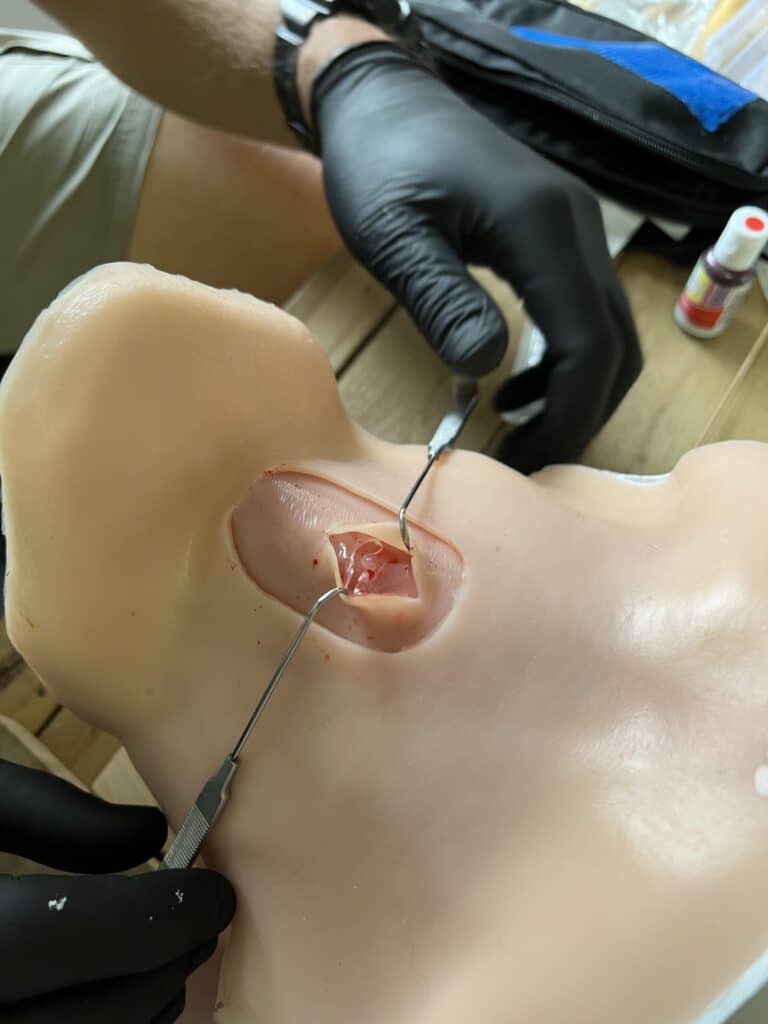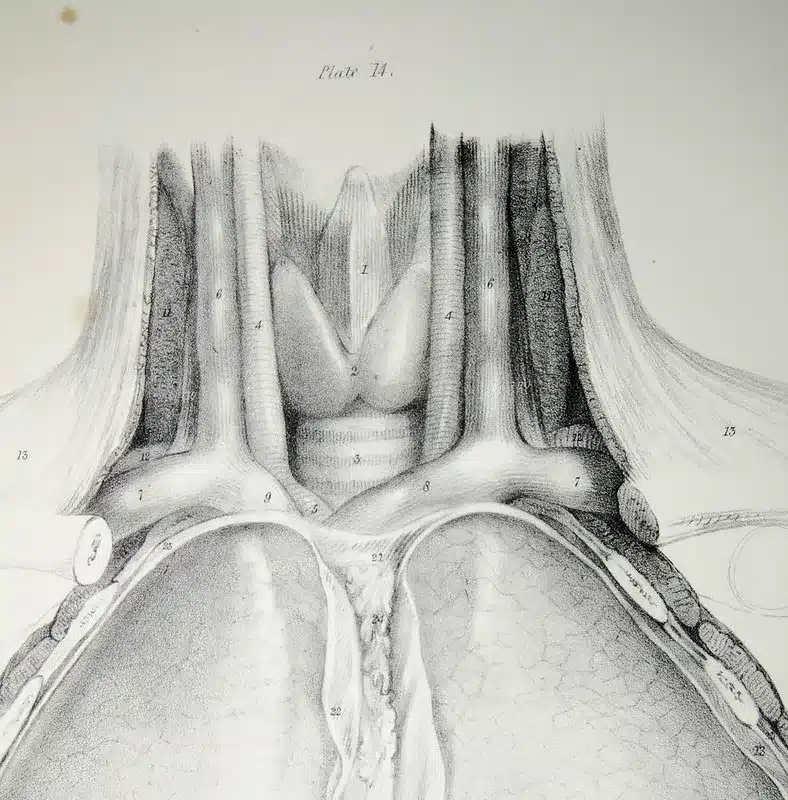1. Introduction to Cricothyrotomies: What, When, and Why?
Cricothyrotomy, also known as a “cric,” is a surgical procedure designed to establish an emergency airway when standard methods like intubation aren’t possible or have failed. The procedure requires an incision through the skin and cricothyroid membrane to secure an airway, a vital life-saving skill for emergency care providers and military medics. Its usage is often necessary for high-stress, life-threatening scenarios, such as battlefield, emergency trauma care, or critical care where conventional intubation fails. According to a study in the Journal of Trauma and Acute Care Surgery, battlefield cricothyrotomy has a success rate of 90% when performed by trained personnel. [^1^]
2. Understanding Anatomy: Key Structures for Cricothyrotomies
A deep understanding of the relevant neck anatomy is key to performing a successful cricothyrotomy. Key anatomical landmarks include the larynx, thyroid cartilage, cricoid cartilage, and most importantly, the cricothyroid membrane – a small, easily compressible region between the thyroid and cricoid cartilage. Accurate identification of this membrane is a critical step in ensuring the success of a cric. [^2^]
(Image suggestion: Detailed illustration of the neck anatomy)
3. Indications and Contraindications: When to Perform a Cricothyrotomy
Cricothyrotomy is indicated when there is a failure or inability to intubate or ventilate a patient, or in instances of severe facial trauma. These may include severe shortness of breath, inability to speak, blue or grey skin color, and significant facial or neck injury. While contraindications are limited, they include laryngeal fracture and young age (typically under 12). [^3^]
4. Cricothyrotomy: Step-by-Step Guide
A cricothyrotomy involves a sequence of precise steps: correct identification of the cricothyroid membrane, disinfection of the area, making a vertical skin incision, a horizontal incision through the cricothyroid membrane, tube insertion into the trachea, and securing the tube. Each step requires careful execution and is best performed by a trained professional. [^4^]
5. Cricothyrotomy Success and Failure Rates: An Analysis
Cricothyrotomy is generally successful when performed by trained personnel, with studies indicating a success rate of up to 90%. However, complications can arise, including infection, bleeding, and damage to the laryngeal structures. Consistent training and practice are key to minimizing these risks and improving overall success rates. [^1^]
6. Real-Life Scenarios: Cricothyrotomy in Battlefield and Pre-Hospital Settings
In battlefield or pre-hospital environments, a cric can become a sudden necessity. The ability to perform this procedure amidst chaos and under extreme pressure requires technical proficiency and psychological readiness. Detailed studies have showcased the importance and impact of these real-life scenarios on the success rates of cricothyrotomy. [^5^]
7. Training and Practice: Improving Cricothyrotomy Skills with Battlefield Partners
Our Desktop CRIC trainer and Wearable CRIC trainer offer an immersive, realistic experience, fostering the development of effective cricothyrotomy skills. Regular practice with these tools allows trainees to become comfortable with the procedure and boosts their confidence, improving success rates in real-life emergency scenarios. [^6^]
8. Cricothyrotomy: Common Mistakes and How to Avoid Them
Mistakes during a cric can include incorrect landmark identification, insufficient depth of skin incision, and failure to stabilize the larynx. Effective training, appropriate tools, and frequent practice are crucial to preventing these errors. A study in the Journal of Emergency Medicine indicates that consistent and focused training can significantly reduce the incidence of these common errors. [^7^]
9. Continuing Education: Staying Up-to-Date on Cricothyrotomy Best Practices
Staying current with cricothyrotomy practices is key. Battlefield Partners supports a number of skilled training centres around the world that offers regular courses and updates to inform practitioners about the latest cricothyrotomy developments and best practices. Regular continuing education ensures that you’re always prepared for an emergency. [^8^]
(Image suggestion: Image representing continuing education, such as a calendar of upcoming courses or a book on cricothyrotomy)
You might be interested in learning more about training for CRICs in medical simulations. And seeing Battlefield Partners’ surgical airway trainers for the classroom and simulation exercises.
[^1^]: Smith, R. P., et al. (2019). “Battlefield cricothyrotomy: An analysis of 100 procedures”. Journal of Trauma and Acute Care Surgery.
[^2^]: Lyon, R. M., et al. (2017). “Human factors in prehospital research: Lessons from the PARAMEDIC trial”. Emergency Medicine Journal.
[^3^]: Middleton, P. M. (2010). “Critical care in the emergency department: Airway management and initial resuscitation”. Emergency Medicine Australasia.
[^4^]: Driver, B. E., et al. (2018). “The Bougie and First-Pass Success in the Emergency Department”. Annals of Emergency Medicine.
[^5^]: McSwain, N. E., et al. (2011). “Prehospital traumatic cardiac arrest: The cost of futility”. Journal of Trauma.
[^6^]: Pugh, C. M., et al. (2012). “Virtual patient technology: Engaging primary care physicians in continuing medical education”. Journal of Continuing Education in the Health Professions.
[^7^]: Kovacs, G., et al. (2015). “Airway management in emergencies”. Journal of Emergency Medicine.
[^8^]: Søreide, E., et al. (2007). “Emergency surgical tracheostomies done by surgical trainees: A description of technique and clinical review”. Scandinavian Journal of Surgery.




